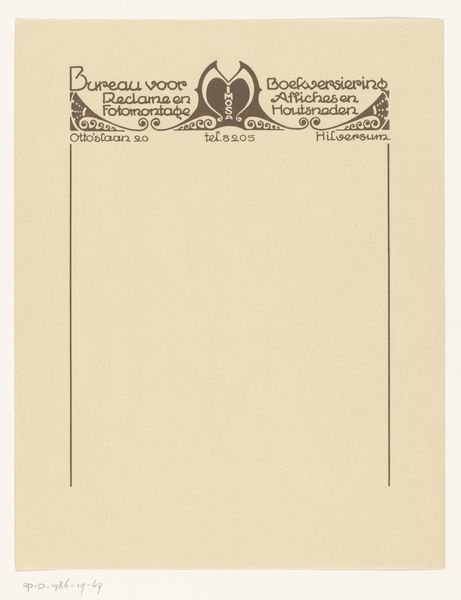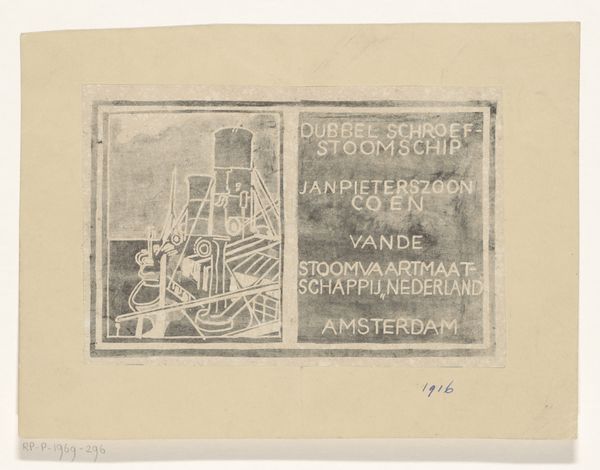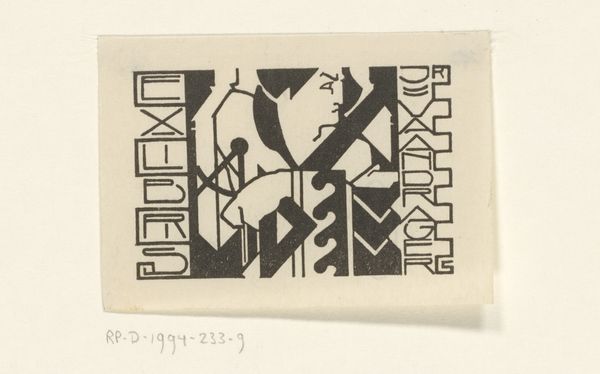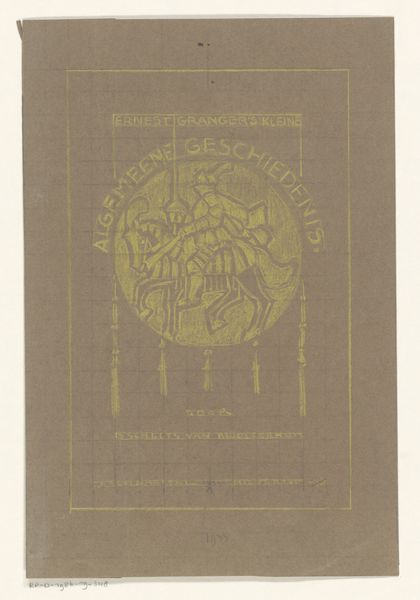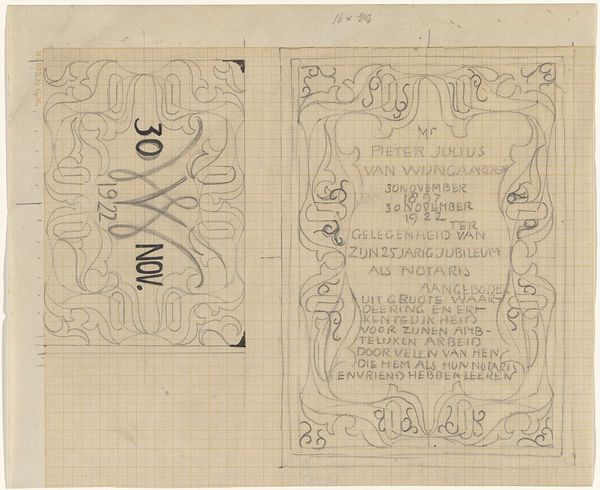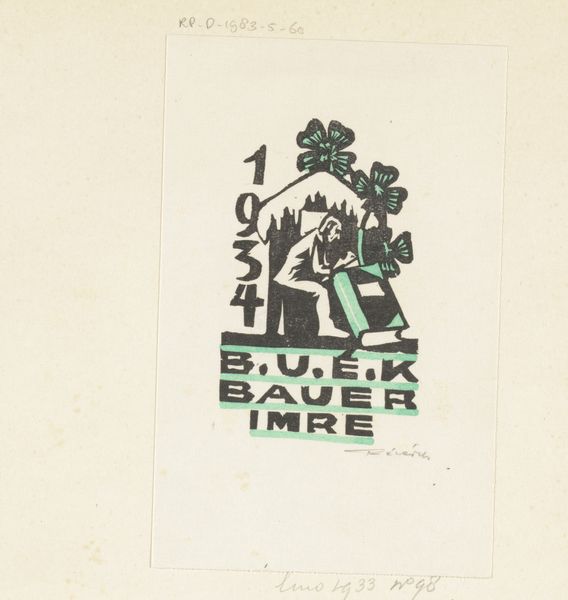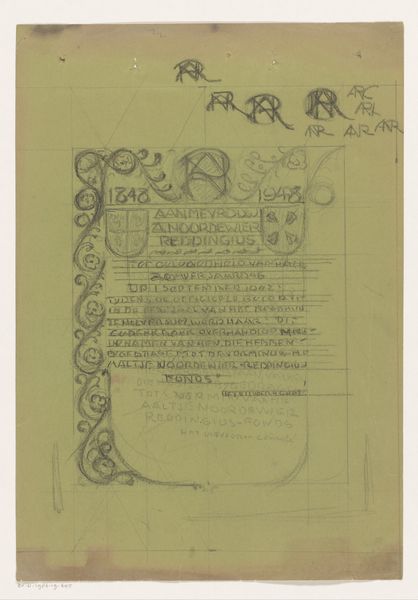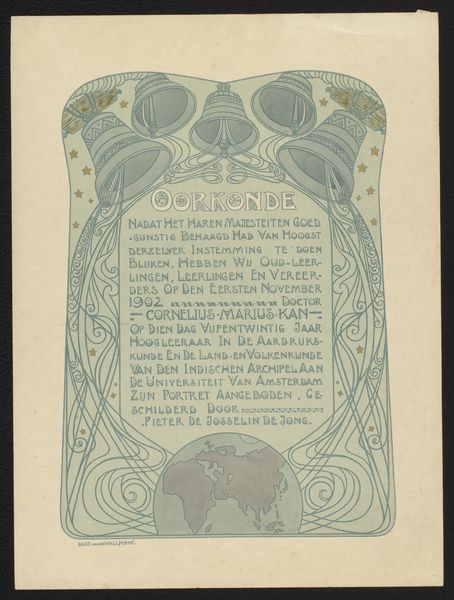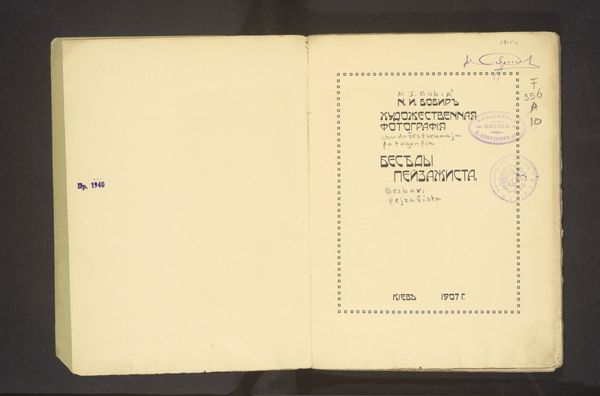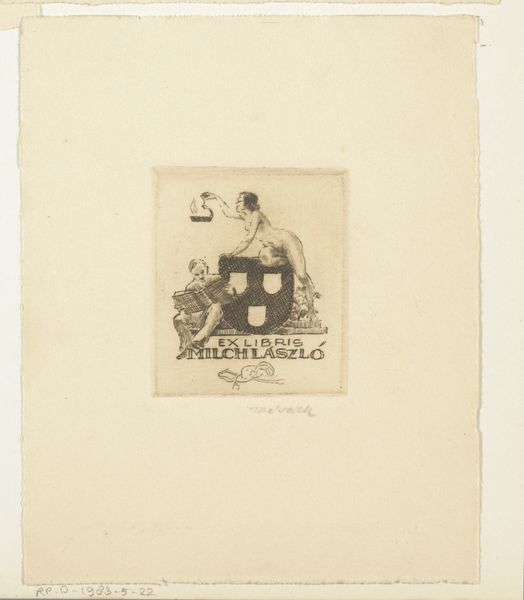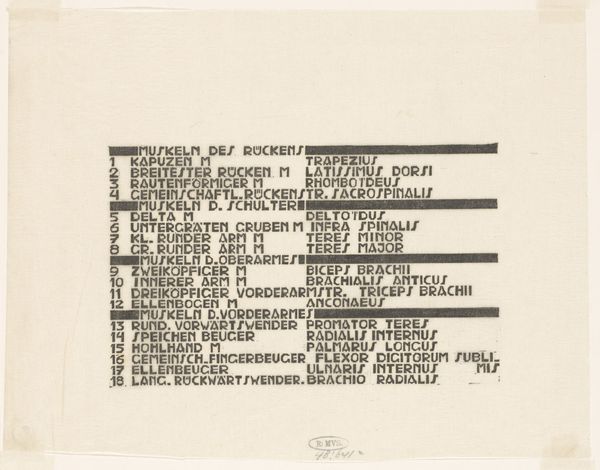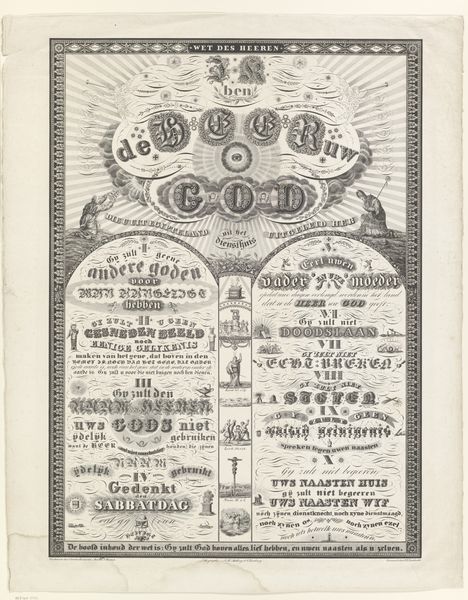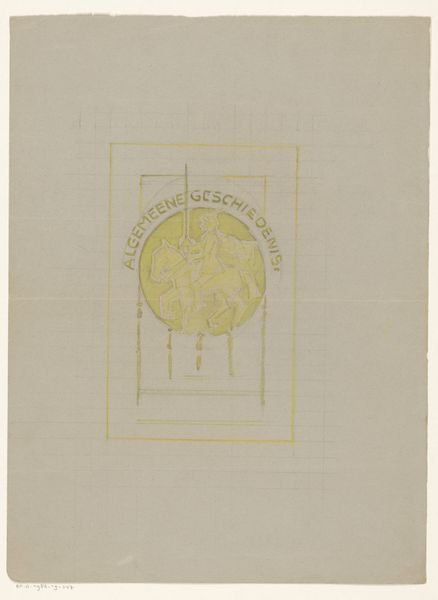
graphic-art, print, linocut, textile, woodcut
#
art-deco
#
graphic-art
# print
#
linocut
#
woodcut effect
#
textile
#
linocut print
#
woodcut
Dimensions: height 116 mm, width 84 mm
Copyright: Rijks Museum: Open Domain
Curator: This stark little print immediately makes me think of newspapers and manifestos. The bold contrasts and direct message feel like a call to action. Editor: It certainly has an urgency about it. We’re looking at "Nieuwjaarswens voor 1935 van Frans Tullingh", a New Year's greeting for 1935 by Frans Tullingh, created in 1934. It's a linocut print currently held here at the Rijksmuseum. Curator: 1934, a crucial time. The world teetering. And what imagery! Above a grid-like globe, dark clouds swirl just beneath the numerals of the coming year, like a prophecy waiting to unfold. Editor: Exactly. The choice of linocut, a readily reproducible medium, speaks to the democratization of art during this period. It was a direct and accessible way to disseminate information and, potentially, influence public opinion. We see this Art Deco influence, where modern styles get employed for functional communication. Curator: Functionality blended with a desire for meaning. The globe, for me, symbolizes interconnectedness, but also fragility. The shadows hint at the storms brewing internationally, and it mirrors the clouds that look like it will come down hard upon the world. The message, "Moge 1935 voor U een lichtend jaar worden"—"May 1935 be a bright year for you"— reads as a desperate hope rather than a confident expectation. Editor: That tension between hope and fear is palpable, especially understanding the broader context. The rise of fascism, the looming threat of war... A New Year's wish in such times carries an added weight of social responsibility. And given Tullingh's lesser-known status, it poses questions about the role of 'minor' artists in reflecting socio-political anxieties. Curator: The print becomes more than just a seasonal greeting. It transforms into a poignant cultural artifact. A tangible piece of hope amid escalating darkness. It encapsulates the collective unconscious anxieties and aspirations of its time. Editor: Absolutely. Its very existence raises intriguing questions about artistic engagement and the socio-political forces shaping artistic production. Thank you for adding new layers to my appreciation. Curator: And thank you. Thinking about it now, I realize its formal simplicity emphasizes its conceptual depth even more.
Comments
No comments
Be the first to comment and join the conversation on the ultimate creative platform.
